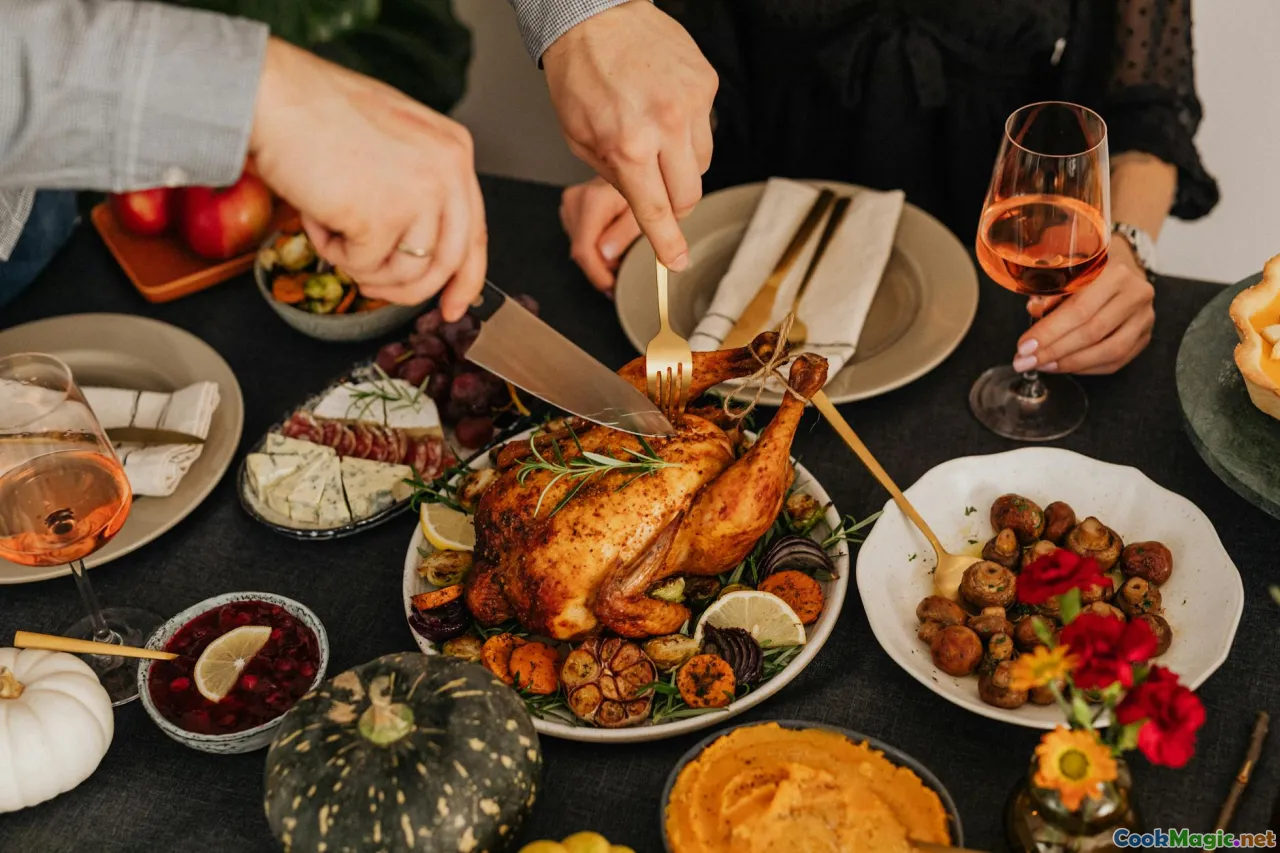Native Herbs in Māori Dishes and Their Culinary Roles
8 min read Explore the rich world of Māori herbs, their cultural significance, and how they elevate traditional dishes with vibrant flavors and stories. April 27, 2025 11:00
Native Herbs in Māori Dishes and Their Culinary Roles
Imagine walking through lush New Zealand forests, the air thick with the scent of fresh greenery, and discovering a treasure trove of herbs that have nourished Māori communities for centuries. These native herbs are not merely ingredients; they are woven into the very fabric of Māori identity, spirituality, and culinary artistry. Their vibrant flavors and aromatic qualities elevate traditional Māori dishes, creating a sensory symphony that connects people to land, history, and culture.
The Cultural Significance of Māori Herbs
In Māori culture, herbs—known as rongoā—hold profound spiritual and medicinal importance. Many native plants are revered not only for their healing properties but also for their role in rituals, ceremonies, and daily life. The use of herbs in Māori cuisine is deeply intertwined with traditions of respect for nature and acknowledgment of land as kaitiaki (guardians).
Herbs such as kawakawa, rōhumu, māhoe, and harakeke are more than flavor enhancers—they embody stories, ancestral knowledge, and a harmonious relationship with the environment.
Key Native Herbs in Māori Cuisine and Their Culinary Roles
1. Kawakawa (Piper excelsum)
**Description & Sensory Qualities:**Kawakawa leaves are heart-shaped, with a distinctive peppery aroma and a slightly numbing sensation on the tongue. When used in cooking, their pungent, aromatic qualities bring warmth and depth.**Culinary Uses:**Traditionally, kawakawa leaves are infused into teas, used to flavor broths, or incorporated into boiled dishes. Chefs today experiment with kawakawa-infused oils and salts, which add a subtle spicy kick to seafood and vegetable dishes.Cultural Role: Beyond the kitchen, kawakawa is revered for its medicinal properties, believed to aid digestion and promote overall well-being. Its role in culinary practices highlights the Māori philosophy of kaitiakitanga—stewardship of land and health.
2. Rōhumu (Melicope ternata)
**Description & Sensory Qualities:**Rōhumu has aromatic leaves with a citrusy, slightly sweet scent, often described as a natural perfume.**Culinary Uses:**Its leaves are used to flavor seafood, especially in traditional hangi—a slow-cooked earth oven—adding a fragrant layer to the smoky, tender meat. Rōhumu is also sometimes incorporated into chutneys or marinades.Cultural Role: The aromatic qualities of rōhumu serve to elevate communal feasts, symbolizing hospitality and respect for guests.
3. Māhoe (Melicytus spp.)
**Description & Sensory Qualities:**Māhoe leaves have a mild, grassy aroma and are used fresh or dried.**Culinary Uses:**They are often used in light broths or as a garnish, imparting a subtle herbal note. In some regions, māhoe is added to traditional Māori teas.Cultural Role: Māhoe represents the gentle harmony of Māori herbal practices, emphasizing balance and well-being.
4. Harakeke (Phormium tenax)
**Description & Sensory Qualities:**While primarily known for its fibrous leaves, young harakeke shoots and tips can be used for flavoring and as a vegetable.**Culinary Uses:**The young shoots are often cooked in steam or added to stews, providing a fibrous texture and earthy flavor.Cultural Role: Harakeke is a symbol of Māori identity, and its use in cooking is intertwined with traditional weaving and resourcefulness.
The Art of Incorporating Herbs into Māori Dishes
Traditional Techniques
Māori culinary techniques emphasize respect for ingredients. Herbs are often added during slow cooking processes like hangi, where their flavors meld with meats and root vegetables over hours of gentle heat. Infusions, teas, and poultices are other methods of harnessing their properties.
Modern Innovations
Contemporary Māori chefs blend traditional herbs with modern gastronomy, creating innovative dishes that honor heritage while appealing to global palates. Infused oils, herb salts, and aromatic broths are now common in upscale Māori restaurants.
Personal and Community Connections
For Māori families, cooking with native herbs is a way of passing down stories and values. Each herb tells a story—of ancestors, land, and spirituality—and cooking becomes a ritual of remembrance and identity.
Personal Reflections and Experiences
As a food writer fortunate enough to explore Māori markets and kitchens, I’ve witnessed the powerful connection between herbs and cultural identity. The aroma of kawakawa leaves simmering in a pot evokes a sense of home and belonging. Sharing a bowl of herbal-infused broth during a traditional gathering feels like reconnecting with ancient roots.
One memorable experience was participating in a hangi feast where rōhumu was generously used to season the seafood. The fragrant, citrus notes complemented the smoky earthiness perfectly, creating an unforgettable taste that embodies the spirit of Māori hospitality.
Preservation and Future of Māori Herbs
In recent years, there has been a resurgence of interest in native Māori herbs, driven by movements to preserve indigenous knowledge and promote sustainable harvesting. Educating younger generations about the significance of these herbs ensures their continued use and cultural relevance.
Efforts are also underway to cultivate herbs like kawakawa and rōhumu commercially, making them accessible for chefs and home cooks worldwide, thus spreading the Māori culinary story globally.
Conclusion
Native herbs in Māori cuisine are far more than mere ingredients—they are living symbols of history, spirituality, and resilience. Their vibrant flavors and aromatic qualities continue to inspire chefs and home cooks alike, forging a culinary bridge between the land’s ancient wisdom and contemporary innovation. Embracing these herbs means honoring Māori culture, nurturing sustainability, and celebrating the profound relationship between people and nature.
So next time you savor a dish tinged with herbal notes, remember—you are tasting centuries of tradition, stories carried on the wind, and the enduring spirit of Māori land and people.









